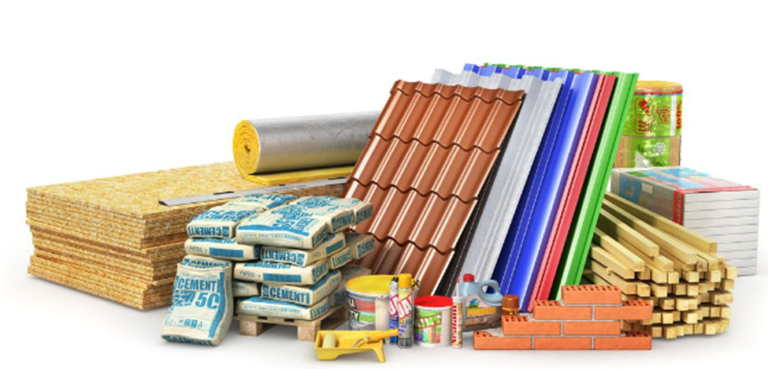Primer and Paint: What You Need to Know for Best Results
Both primer and paint are important for house painting. However, they are useful for various purposes. A vast understanding about these differences will help you to achieve best results.

Primer Prepares the Surface
Primer is a base coat applied before painting. It helps surfaces bond better with paint. Primer ensures paint adheres and lasts longer. Without primer, the paint may not stick well.
Primer Seals the Surface
The new surfaces are porous and absorb paint quickly. The primer seals these surfaces, avoiding excessive absorption. This saves paint and results in a smoother finish.
Primer Covers Imperfections
Surfaces with stains or marks need primer before painting. Primer hides imperfections and creates a clean base. This makes the paint job look more professional.
Paint Adds Color and Finish
Paint adds color and beauty to walls. It comes in a variety of finishes, such as matte and glossy. Paint also protects the surface from wear and tear.
Paint Is Thicker Than Primer
Paint contains more pigments than primer. These pigments provide color and finish. Primer, on the other hand, has fewer pigments and more binders.
Primer Improves Paint Adhesion
Primer helps the paint bind to surfaces more efficiently. Without priming, paint will flake or fade over time. This is particularly true for glossy or smooth surfaces.
Primer and Paint Are Not Interchangeable
Some people think paint can replace primer. This is not true. Primer prepares the surface, while paint provides the finish. Skipping primer can lead to uneven results.
Different Types of Primers
Primers are planned for various surfaces. Like wood, drywall, and metal each require a specific primer. Selection of the best one for house painting is very important.
Oil-Based vs. Water-Based Primer
Primers come in oil-based and water-based varieties. Oil-based primers are great for tough stains. Water-based primers are easier to clean and dry quickly.
Paint Also Has Oil and Water-Based Options
Paint, like primer, can be either oil or water based. Although oil-based paint is long-lasting, it dries slowly. Water-based paint dries quickly and is environmentally friendly.
Primer Blocks Stains, Paint Doesn’t
Paint does not block stains like primer does. Without primer, stains may bleed through the paint. Primer seals them, resulting in a clean surface for house painting.
When to Use Primer
Primer is required for painting new surfaces. Primer is required for bare wood, drywall, and metal. It is especially important when transitioning from dark to light colors.
When to Skip Primer
Sometimes, you can skip primer. For repainting a similar color, primer may not be needed. However, primer is always recommended for the best painting results.
Two-in-One Paint and Primer
Some paints combine primer and paint in one product. These two-in-one products save time but may not perform as well. Separate primer and paint offer better results for house painting.
Primer Helps with Drastic Color Changes
If you’re changing colors, primer is essential. Painting trends often feature bold colors. Primer ensures that the old color doesn’t show through. This creates a vibrant and true color.
Primer Saves Time in the Long Run
Skipping primer might seem quicker, but it isn’t. Without primer, you may need extra paint coats. A single coat of primer reduces the time and paint needed later.
Primer Improves Paint Longevity
Primer makes paint last longer. It forms a strong binding between the surface and the paint. This minimizes peeling, cracking, and fading over time.
Primer Is Necessary for Certain Surfaces
Glossy or slick surfaces require primer for house painting. Without it, paint may peel or not stick. Primer creates a surface the paint can adhere to.
Primer and Paint Work Together
Primer and paint complement each other. Primer prepares the surface, and paint finishes it. Using both leads to better results and fewer touch-ups.
Paint Comes in Different Finishes
Paint finishes affect the final look of your house. Matte, satin, and gloss are common finishes. Current painting trends favor matte for a modern look.
Primer Can Be Tinted
Tinting the primer helps with color coverage. It’s especially useful when painting bold colors. Tinted primer reduces the number of paint coats needed.
Primer and Paint Protect Surfaces
Primer and paint offer protection beyond looks. Primer seals surfaces, while paint adds a durable finish. Together, they protect your house from moisture and damage.
Primer Can Block Odors
Certain primers block odors from smoke or mildew. These specialized primers are great for older homes. They create a fresh surface for painting.
Choosing the Right Primer and Paint
Choosing the right products is crucial for house painting. For smooth surfaces, a bonding primer is best. For stained areas, stain-blocking primers work well.
Latest Painting Trends
Painting trends today focus on minimalism and bold colors. Neutral tones, like beige and gray, are popular. Bold accent walls in navy or forest green are trendy too.
Primer and Paint Help Achieve Trendy Looks
For trendy paint finishes, primer is essential. It prepares the surface for deep, rich colors. Following painting trends requires high-quality products for the best outcome.
Primer for Exterior House Painting
Exterior house painting also requires primer. Exterior primers protect against weather and moisture. Without primer, exterior paint can peel due to harsh conditions.
Paint for Exterior Protection
Exterior paint provides protection from the elements. It’s designed to withstand sun, rain, and temperature changes. Pairing it with primer ensures maximum durability.
Primer for New Construction
Newly built homes need primer before painting. Fresh drywall or wood absorbs paint quickly. Primer seals these surfaces and prevents excessive paint usage.
Primer Reduces Paint Costs
Though primer is an additional step, it saves money. Fewer paint coats are needed when a surface is primed. This reduces the overall cost of house painting.
Primer and paint have very different but crucial roles in house painting. Primer sets and seals the surface, whilst paint adds color and finish. Together, they provide a long-lasting paint finish. You may create a professional look for your home by following painting trends and utilizing high-quality supplies.
FAQ’s
What is primer used for?
Can paint be applied without primer?
What is the main difference between primer and paint?
Can I use paint and primer in one product?
Does primer need to be the same color as the paint?






